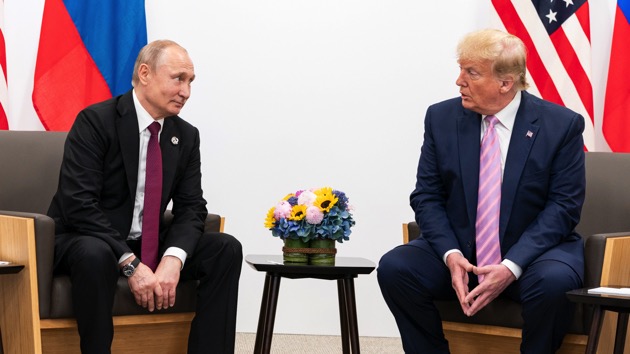
Official White House Photo by Shealah CraigheadBy CONOR FINNEGAN and PATRICK REEVELL, ABC News
(WASHINGTON) — The U.S. and Russia are moving closer toward an agreement to extend the last major nuclear arms control pact between them and freeze both countries’ nuclear arsenals for one year.
The possible deal could avoid a new nuclear arms race, at least for the moment, and could mean that President Donald Trump and Russian President Vladimir Putin meet in the coming weeks — a signing ceremony Trump has long pursued, with the 2020 presidential election looming.
But there are still gaps between the world’s two largest nuclear powers over New START, the 2010 treaty that limits each side to 1,550 strategic nuclear warheads and includes verification measures like on-site inspections and data sharing.
The opening came Tuesday after Russia’s Foreign Ministry said Moscow is willing to extend New START with a “freeze,” after Putin said last week that he would only agree to an extension “without pre-conditions.”
Trump’s National Security Adviser Robert O’Brien said in statement Friday that was a “non-starter” and blamed the Russian government for sending mixed messages: “This would have been a win for both sides, and we believed the Russians were willing to accept this proposal when I met with my counterpart in Geneva,” O’Brien said.
On Tuesday, Russia’s Foreign Ministry inched closer to the U.S. proposal for a freeze, and the State Department called for immediate talks to finalize a deal.
“We appreciate the Russian Federation’s willingness to make progress on the issue of nuclear arms control. The United States is prepared to meet immediately to finalize a verifiable agreement,” State Department spokesperson Morgan Ortagus said in a statement.
But the Russian Foreign Ministry said nothing about a “verifiable agreement,” instead proposing a “political obligation for ‘freezing’ for that period the quantity of nuclear warheads possessed by both sides. This position can be realized strictly and exclusively within the understanding that a ‘freeze’ of warheads will not be accompanied by any kind of additional demands from the side of the U.S.”
That throws the ball back into the U.S. court in what has become a public negotiation. The U.S. may still demand a verification regime of some kind to ensure Russia doesn’t cheat on a freeze — or continue to insist on other measures, such as a reference to including China in future nuclear arms control talks.
Trump’s chief negotiator, special presidential envoy for arms control Marshall Billingslea, has repeatedly insisted that talks must involve the Chinese government, which has a much smaller, but rapidly growing nuclear arsenal.
The Russian government has not yet responded to the State Department call for meeting “immediately,” although its foreign ministry attacked the Trump administration for negotiating on “social media,” saying it never received an official response to Putin’s comments last week.
“A deal is possible, but it’s unclear whether it’s close. A disagreement over whether verification is needed is pretty significant,” said James Acton, co-director of the Carnegie Endowment for International Peace’s Nuclear Policy Program in a tweet. “If the U.S. wants a deal before the election, then either (i) the U.S. will have to back down and accept no verification; or (ii) the U.S. will have to accept a Russian promise to negotiate verification arrangements since it’s not possible to do so in 2 weeks. Both are possibilities; both are far from assured.”
Trump has long played up his ability to negotiate, but his administration has walked away from several arms control pacts, including the Intermediate-Range Nuclear Forces (INF) Treaty, the Open Skies Treaty, and the United Nations’ Arms Trade Treaty.
Copyright © 2020, ABC Audio. All rights reserved.
